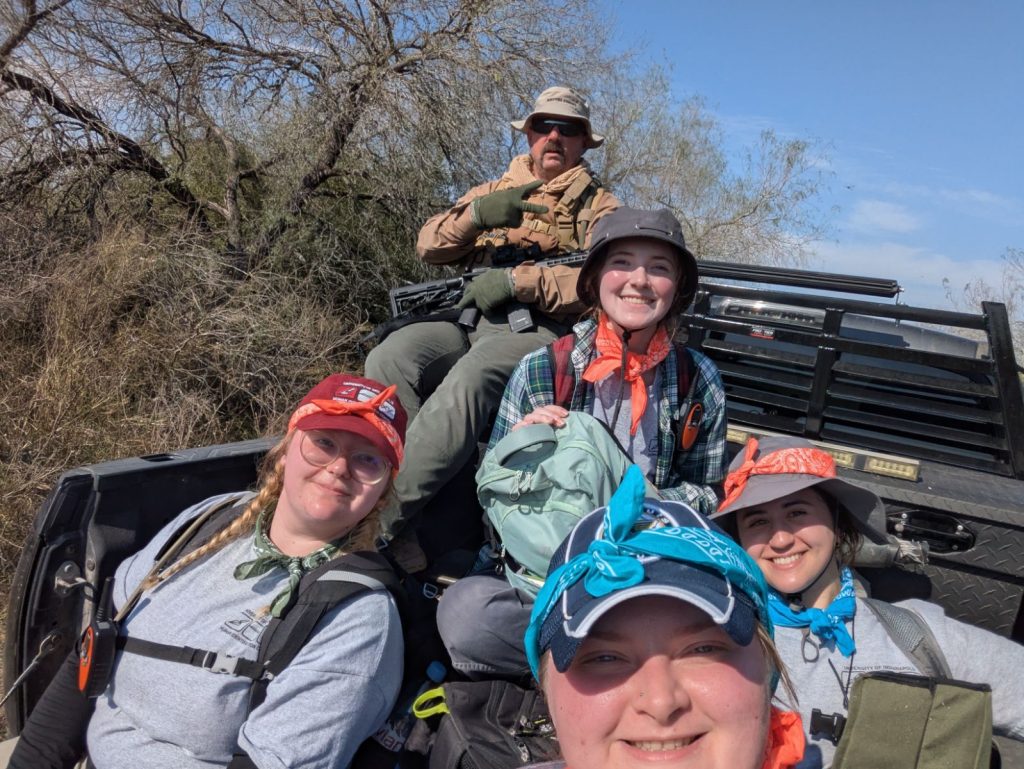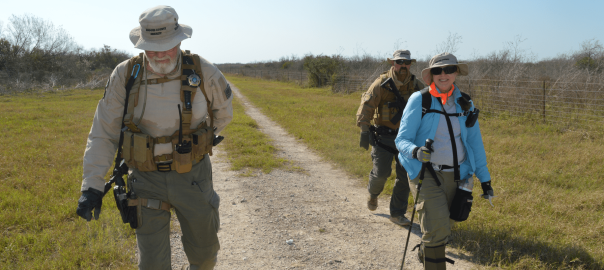When I woke up this morning the first thing I realized was just how tired I was. Not only did my eyelids feel heavy, but my feet and back had begun to ache more than they had the past two days. This wouldn’t normally be a problem for me, I would just put on a comfy pair of socks and go, but given the fact that it was our hottest day (a sunny 86 degrees), adding more layers for comfort really wasn’t the best idea.
It was also the first morning that I didn’t know what to expect. We had known the night before the previous two days what we would generally be doing, but today we had less of a clue. It wasn’t until Don and Ray got to our hotel that we learned that we would be heading out to a ranch where previous recoveries had been made. There were no specific coordinates or locations we were searching at, but Don had done recoveries at some of the surrounding ranches, and this one had not been searched in a while, so we set off.
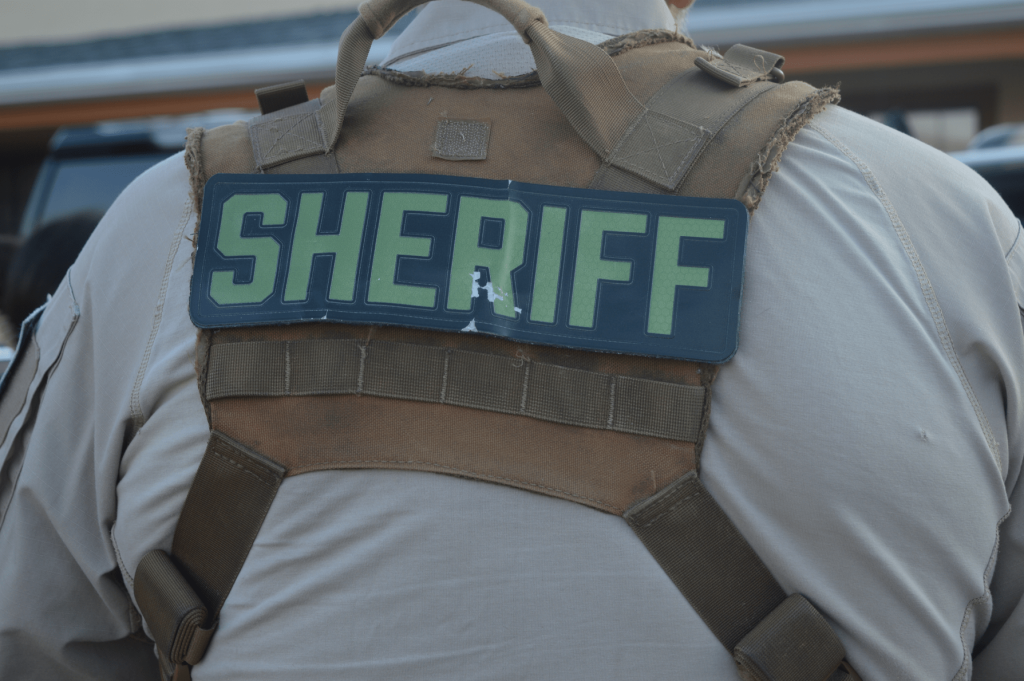
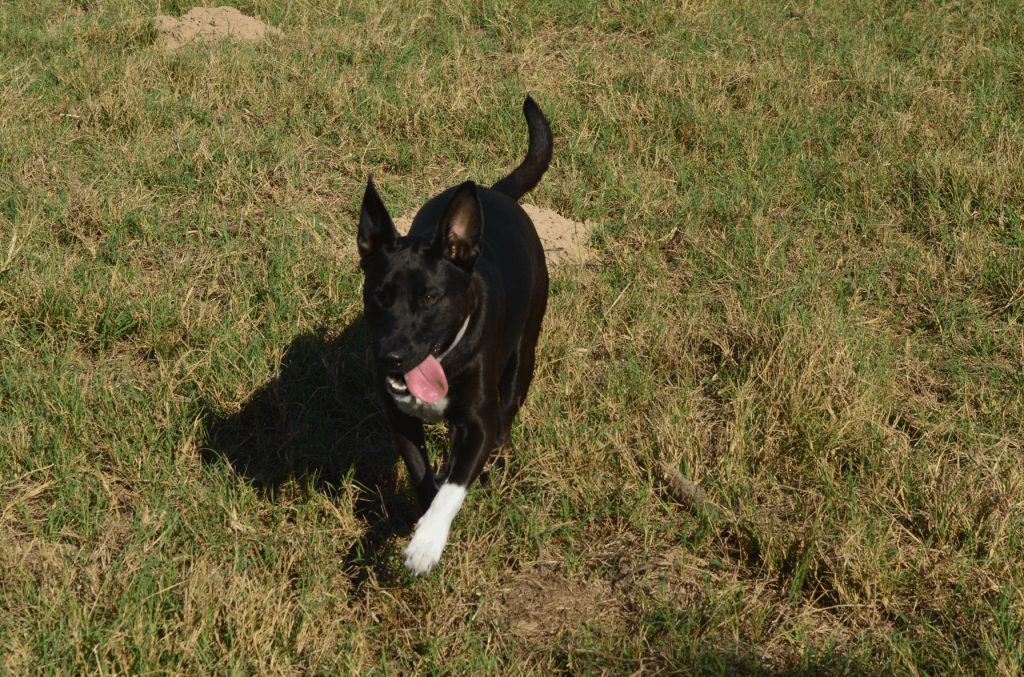
Day 3 of our time in Falfurrias would start about an hour or so from where we were staying, and for the first time, we got to take the minivan out onto the ranch. I’ll be the first to say that I was surprised we got as far as we did without being in one of Ray or Don’s massive trucks, but we managed! The drive along the ranch roads was also filled with interesting things to see, from fences to pipeline trails to even a larger number of nilgai (a type of antelope from India) and deer. The spot we stopped at was quiet (save for the whipping wind that made it hard to hear what anyone was saying): a two-track road with thick brush on one side and a fence line on the other.
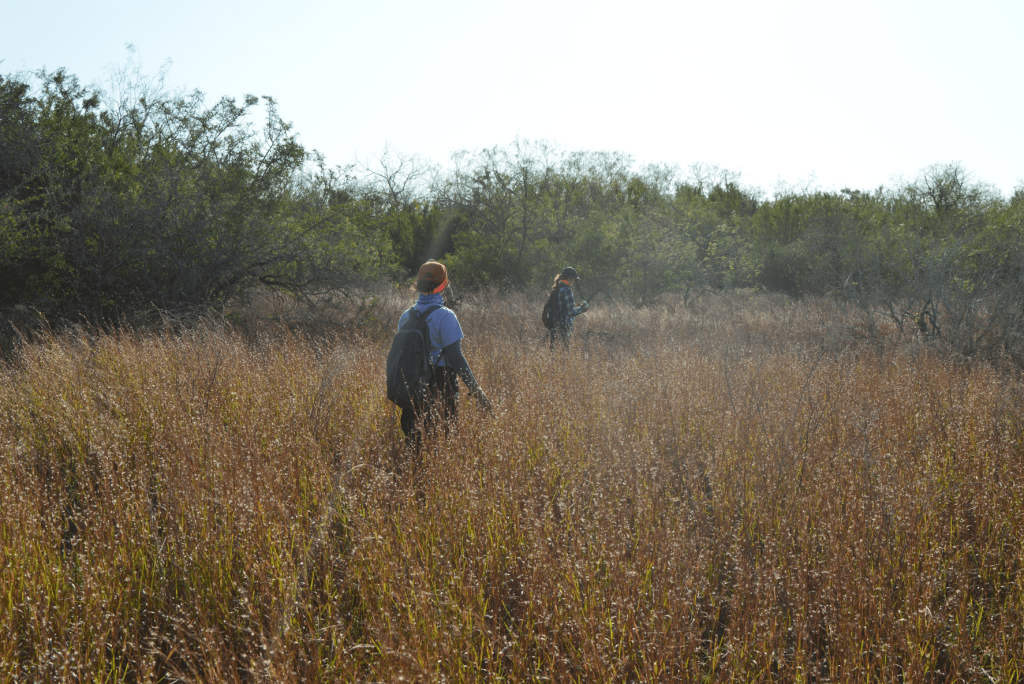
The moment we stopped along the two-track it was time to begin, and we started by just prepping our gear and putting on lots of bug spray and extra sunscreen, both necessary for the type of thick brush we were looking at examining in this heat. Don took off into the brush to look for evidence of people, whether that be tracks or food wrappers or otherwise, and we started by beginning a line search along the grassy area between the two-track and the brush.
A little side note here: line searches are harder than they look… especially if you are acting as an anchor! I offered to be the anchor for our first line searches of the day, which essentially means that I stood at one end (in this instance along the two-track) and set the pace and direction of our walking. The job of the anchor is to make sure that we all stay in a line and an equal distance apart so that the area is thoroughly examined. Sounds simple right? Well, the hard part is how many moving parts there are to it. If I spent all my time looking at the members of my team and making sure that they were all in line and at a good pace, I found that I kept forgetting to check the area I was walking in, and vice versa. I’m also admittedly not the loudest individual, so offering directions loud enough for the entire team to hear was a big challenge for me, but we managed all right in the end (I hope!).
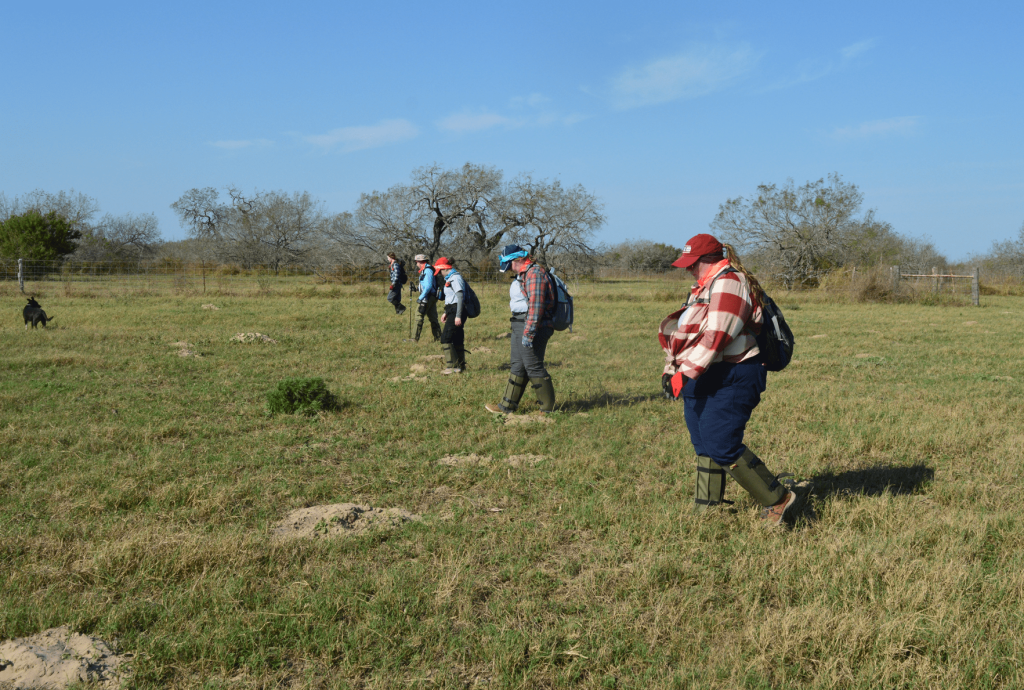
Our search didn’t yield much evidence of people, but it did yield a great number of animal bones, namely cow bones and deer antlers. Among these cow bones, we found many vertebrae, femurs, scapulas, and more- all massive in comparison to the human skeletons I am used to seeing in the osteology lab and the anatomy classroom. It was especially interesting to see how they differed from human bones, and how similar some bones were.
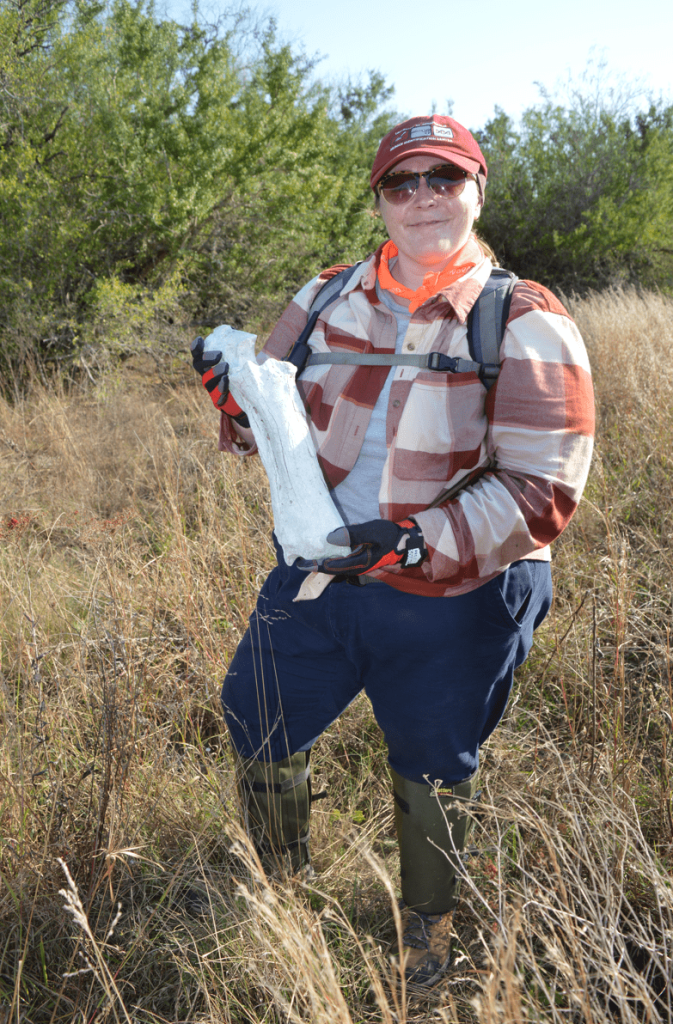
Dr. Eriksen also quizzed us on what some of the bones were and what side they were from, which was a fun challenge (though it did show me that I have a bit of review to do before taking osteology in the spring).
We found many areas in our searches today that had larger remains of nilgai and cow, and many deer antlers which were especially cool to see. It was also really interesting to hear Ray call out things like “4 point” and “6 point” any time we found them, and I learned that this has to do with the number of tines on a deer’s antlers (either on one antler or in total among the two antlers).
After walking a good ways from the trucks and doing some small searches, the sun was high in the sky and I think we were also feeling more than a bit fatigued, so we began to head back to the trucks. Ray suggested Dairy Queen for ice cream and a late lunch, which was a welcome break from the heat. It wasn’t until later in the evening during our debrief that we learned the real reason we had left in such a hurry: border patrol was actively pursuing a group of migrants not far from us.
After we left the ranch, Dr. Latham took us to the Sacred Heart Cemetary in Falfurrias, and we got to hear a bit of the history behind her work here in Texas searching for unidentified migrants.
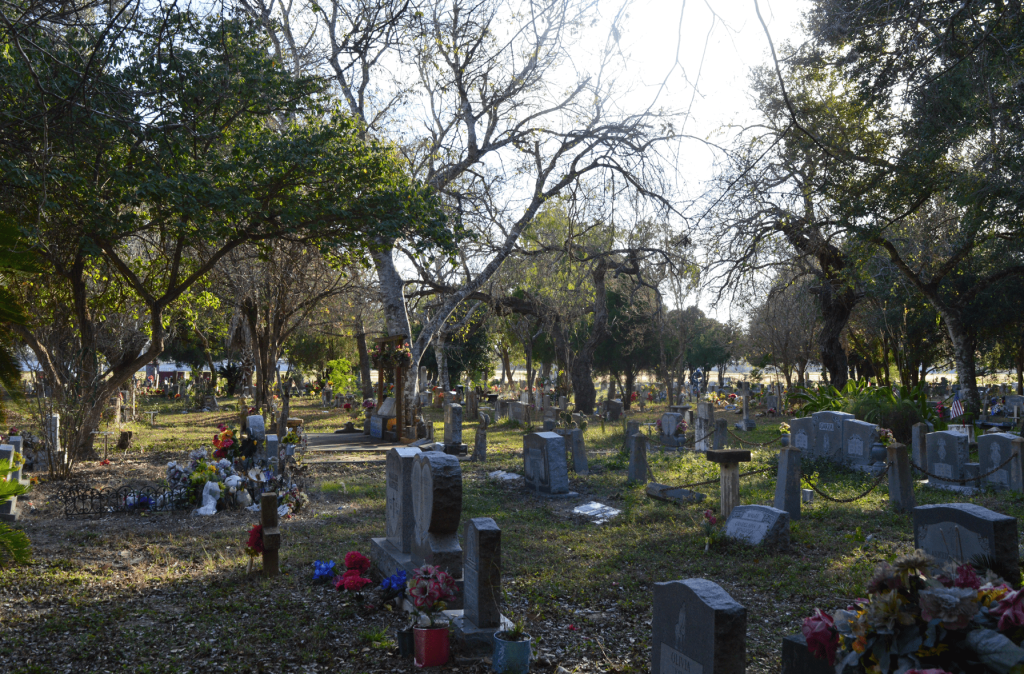
She began taking students to Falfurrias in 2013 after being invited by a professor from a different university, and at first the work involved going to the cemetery to look in unmarked plots of land for unidentified migrants who had been buried there in hopes of possibly identifying them. When we got to the cemetery I remember how calm it felt, even with the amount of people there visiting their loved ones. But one of the biggest things I noticed was how different it was from the cemeteries I was used to visiting, and I was really struck by the difference in the cultural view of death and life. For one, the headstones were decorated with beautiful flowers and figurines, and many of the sites had benches for people to sit at and windchimes in the trees. Some had food placed there, and others were decorated for the holidays (many had Christmas decorations still up). In this area, a grave didn’t feel like a somber scene, but rather one to celebrate those who had lived.
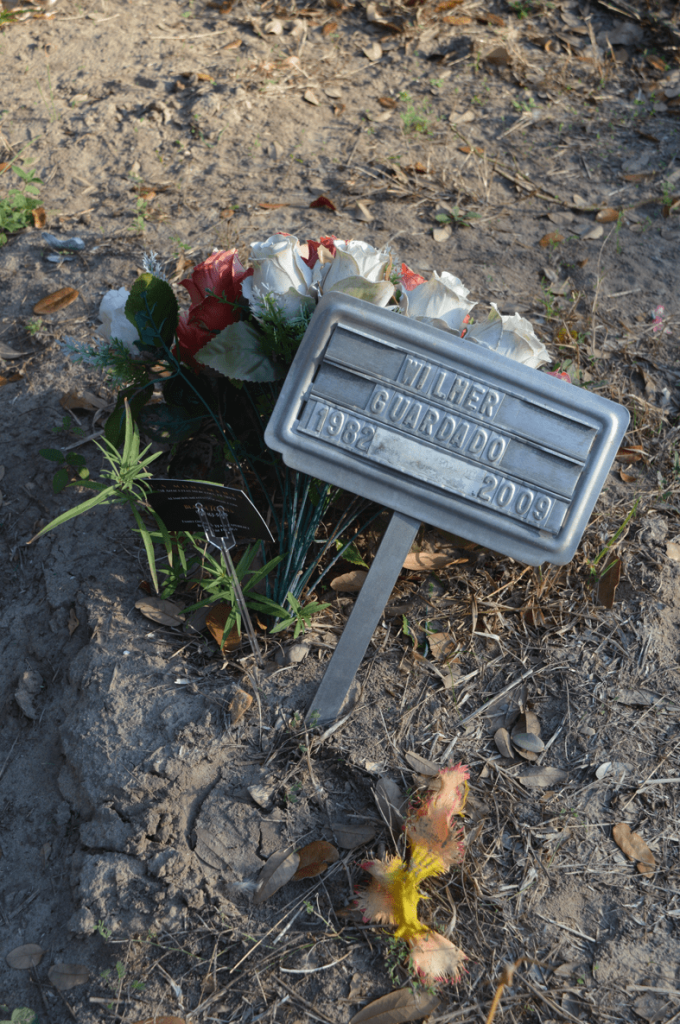
Dr. Latham showed us a small marker for Wilmer Guardado, a previously unidentified man with a small marker to commemorate his burial, and even that was decorated with beautiful flowers. She brought up that there is still a bit of uncertainty regarding whether or not his family even knows that he’s been identified, and it really put everything into perspective for me. We collectively use the term “migrants” to describe those who cross the border, but they really are people like any of us. People with lives and passions and families, and people who deserve to have identities known and stories told. Dr. Latham has been coming here since 2013, and just knowing all of the work and change that has been done because of people like her and Don and Ray and numerous others shows how important and necessary this work is. I’m really proud to be a part of something greater than myself.
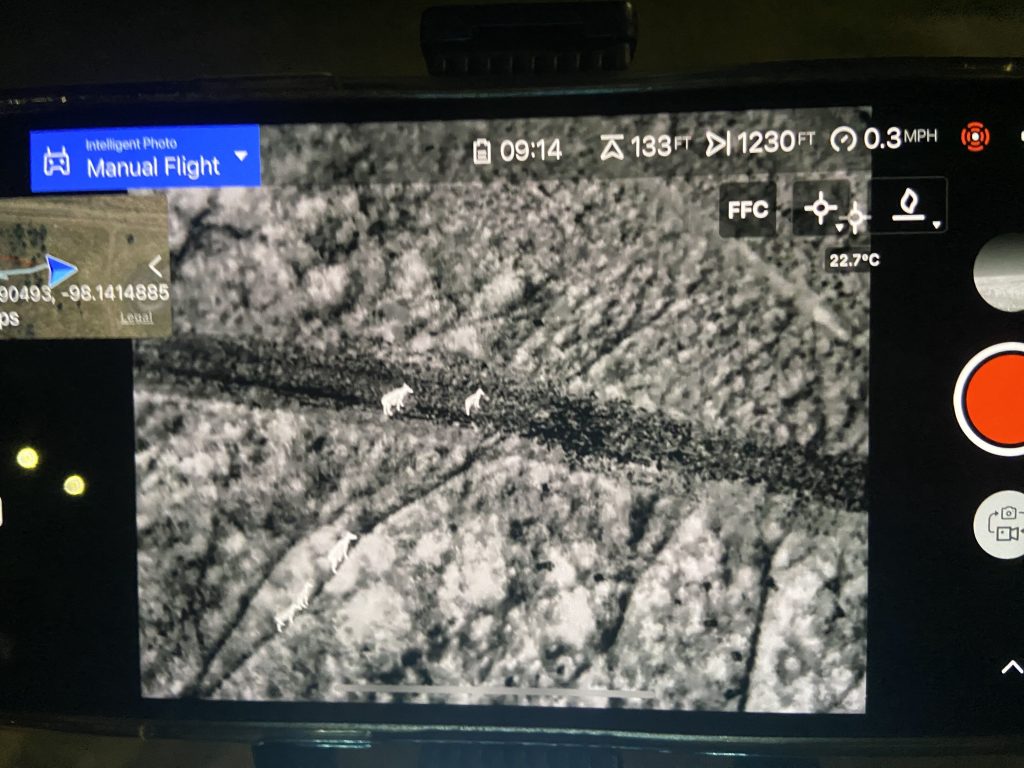
We ended the day with tacos from Laredo Taco Company and taking out Don’s drone to one of the more heavily wooded areas on the side of the road. It was a nice way to decompress after a long day in the heat, and it was interesting to see how the infrared camera on the drone picked up various wildlife like wild hog, nilgai, and more via heat signature. One thing I didn’t know was that even things like trees and bushes can hold onto heat until early in the morning, and Don even talked about how he had used the drone to locate spots for recovery.
Altogether, today was a day of learning, and a lot of reflection, and I don’t know that I’ve perfectly articulated it all here. Even on days like this where we don’t make a recovery, there is still so much to say. But, what I do know is that I’m excited to head back into the brush tomorrow with the team by my side.
– Makenna
